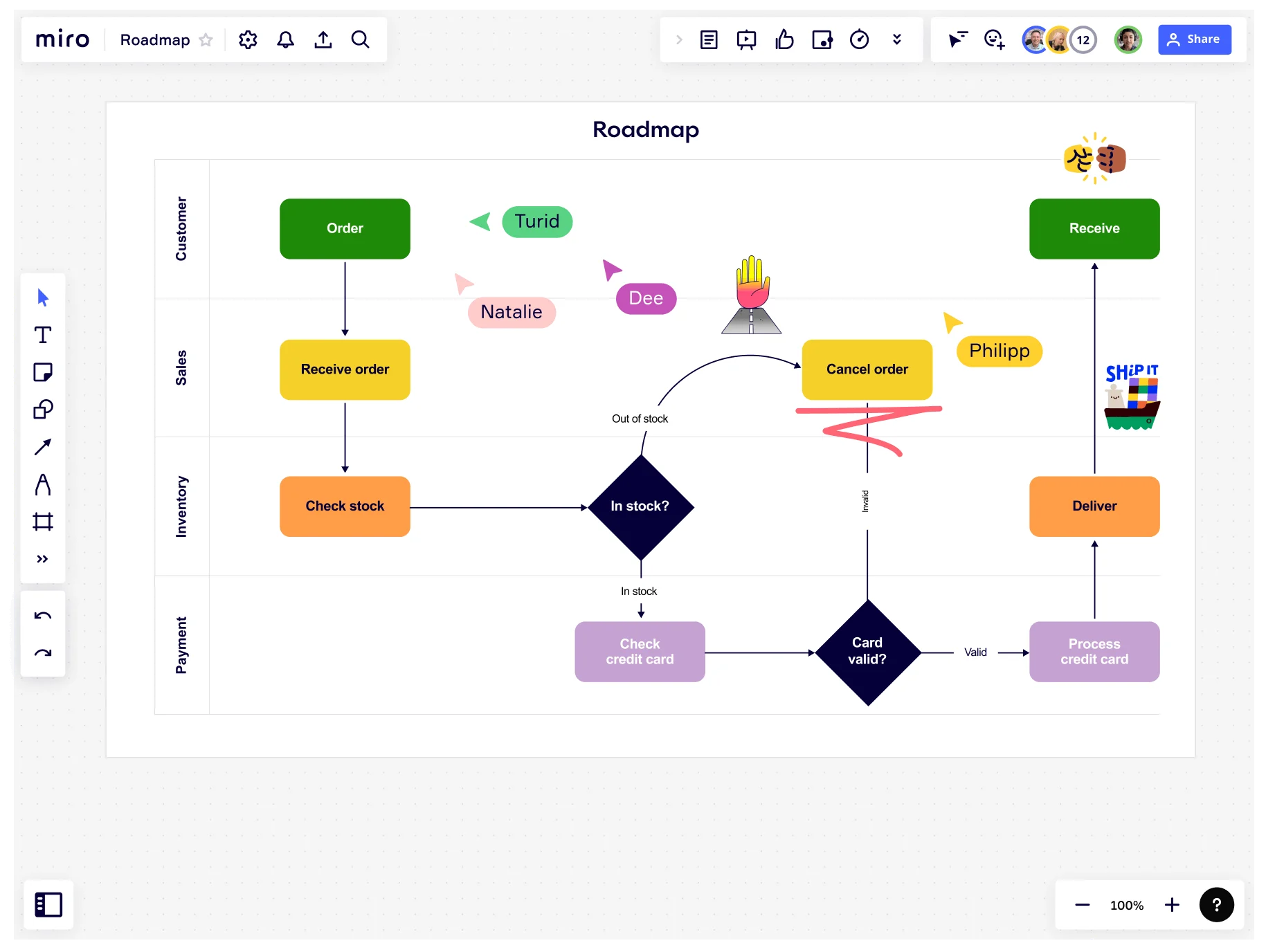
Table of contents
Table of contents
Value roadmap components

Value roadmaps in Agile: What, how and why
Product managers are always looking for ways to better align their goals with the needs of their customers. That's where value roadmaps come in. These strategic tools give us a clear path toward delivering the most value to customers. In this article, we'll explore the components of a typical value roadmap in the Agile context, the advantages of creating one, case studies of successful SaaS companies, and how to make your own value product roadmap.
What is a value roadmap: A quick intro
A value roadmap is a strategic document that plots the course of a product, highlighting the specific values it delivers over time. It focuses on customer needs, business objectives, and a product's value proposition rather than just features. In the Agile context, a value roadmap facilitates frequent iterations, responds to changes effectively, and constantly delivers customer value. It's an indispensable tool in an Agile product manager's toolkit.
Understanding how a value roadmap works
A value roadmap operates on the 'value-driven' development principle, i.e., it prioritizes value delivery over feature delivery. Instead of listing features and dates, it plots the value themes – overarching goals that guide product development – and indicates when these themes will be addressed.For example, a value theme for project management software could be "Enhance Collaboration." Instead of mapping specific features like "chat function" or "file sharing," the value roadmap indicates when the theme of enhanced collaboration will be prioritized.
What are the components of a typical value roadmap?
Although the content of a value roadmap may vary depending on the product or organization, a typical value roadmap consists of these core components:
1. Value Themes: These high-level objectives guide the product's development. They focus on the value you aim to deliver to your customers.
2. Timeframes: Unlike traditional roadmaps with rigid deadlines, Agile value roadmaps often use flexible timeframes like quarters or seasons.
3. Status Indicators: To keep everyone on the same page, status indicators visually represent the progress of each value theme.
4. Stakeholder Input: A value roadmap should take into account the insights and perspectives of all stakeholders, including customers, team members, and executives.
5. Assumptions and Risks: Every roadmap should also outline the potential risks and assumptions made during the planning process.
Benefits of making a value roadmap
Creating a value roadmap offers several significant advantages:
Customer-Centric Approach: By focusing on value over features, you ensure your product remains relevant and beneficial to your customers.
Flexibility and Adaptability: Agile value roadmaps adapt to changes quickly, ensuring your product can pivot as needed.
Alignment: They foster alignment across teams and stakeholders by focusing on the big-picture value themes rather than granular features or tasks.
Visibility and Transparency: Value roadmaps provide clear insights into what the team is working on and why.
Successful stories: SaaS and their value roadmaps
Several successful SaaS companies have used value roadmaps to guide their product development. Here are three notable examples:
1. Slack
Slack's value roadmap focused on improving team collaboration and communication. Their ability to prioritize and deliver value to users has seen them rise as one of the leading team communication platforms.
2. Zoom
Their value themes centered on delivering high-quality video conferencing, ease of use, and reliability. Zoom's value roadmap has allowed it to adapt quickly to the changing needs of remote work, boosting its success.
3. Shopify
Shopify's value themes of simplicity and powerful e-commerce tools guided their product development. As a result, they've managed to stay ahead of their competition and continually deliver value to their users.
How to make a value roadmap
Creating a value roadmap involves several steps:
1. Identify your value themes: Determine the major value propositions that your product offers or aims to offer.
2. Gather stakeholder input: Involve customers, team members, and other stakeholders to gain different perspectives.
3. Estimate timeframes: Set a flexible timeframe for each value theme.
4. Map the value themes: Plot your value themes onto the roadmap.
5. Continually update and refine: Regularly review and update your roadmap to keep it relevant and responsive to changes.
Tips and best practices
Here are some best practices to keep in mind:
Keep it simple: A value roadmap should be clear, simple, and easy to understand.
Prioritize: Not all value themes can be tackled at once. Prioritize based on customer needs, business goals, and resources.
Be flexible: Agile is all about adapting to changes. Be ready to adjust your roadmap as needed.
Communicate and review regularly: Share your value roadmap with all stakeholders and review it regularly to ensure alignment and progress.
To sum it up, a value roadmap is a potent tool that helps product managers prioritize customer value, align teams, and navigate the path toward a successful product. Its effectiveness lies in its customer-centric approach, adaptability, and focus on delivering tangible value. Embrace the value roadmap to drive your product success story just like Slack, Zoom, or Shopify.